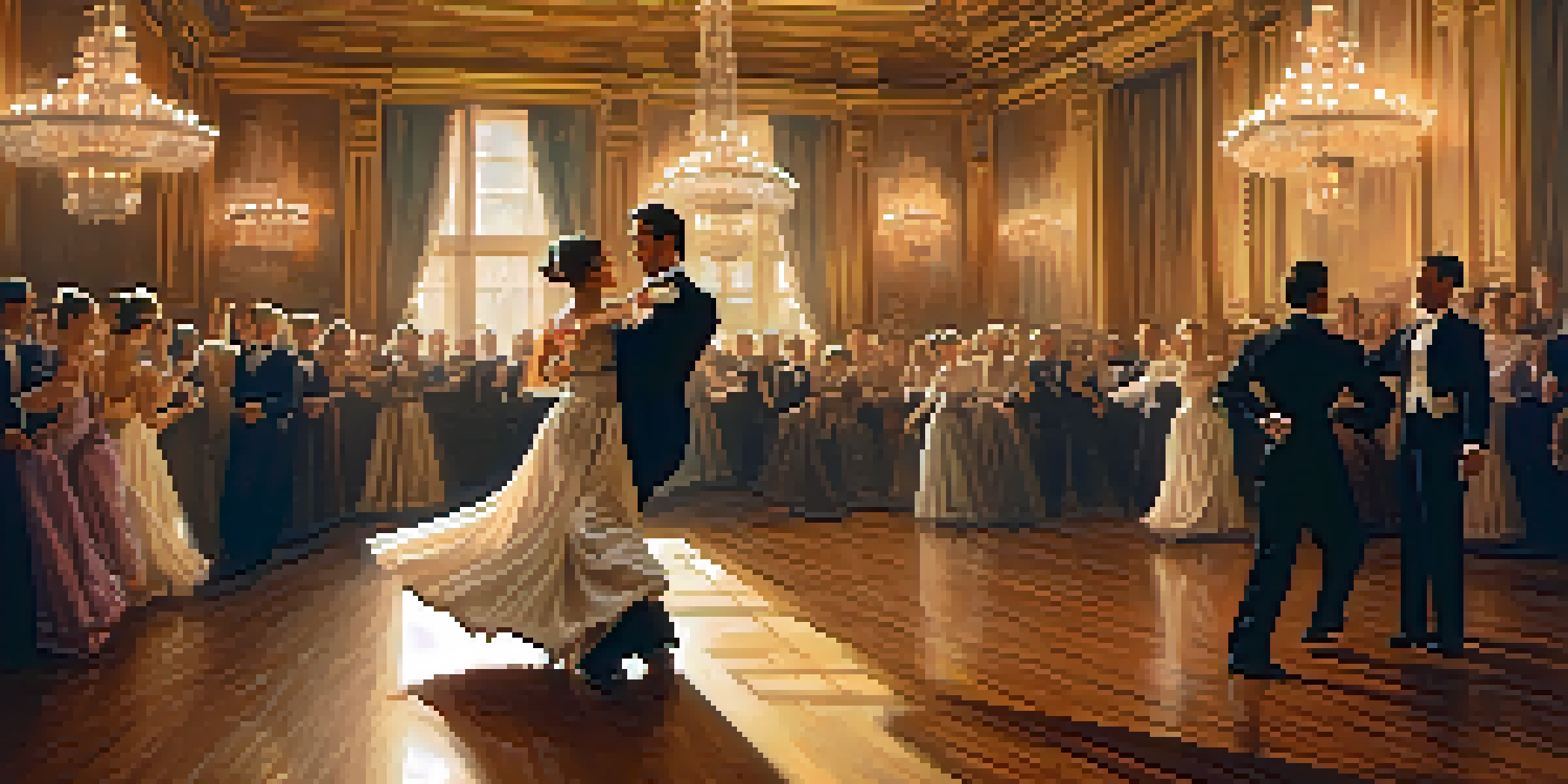The Impact of Dance on Film Editing and Pacing

Dance: A Unique Form of Expression in Film
Dance has long been recognized as a powerful medium of expression, capturing emotions and ideas without a single word spoken. In film, it transcends mere movement, weaving a narrative that can enhance the overall storytelling experience. By incorporating dance, filmmakers can evoke feelings that resonate deeply with the audience, creating memorable moments that linger long after the credits roll.
The Rhythm of Dance and Film Editing
At its core, dance is all about rhythm, which parallels the pacing of film editing. Just as dancers move to a beat, editors manipulate footage to maintain a tempo that matches the emotional tone of the scene. This synchronization creates a seamless flow, allowing viewers to stay engaged while experiencing the narrative in a more profound way.
Dance Enhances Film Storytelling
Incorporating dance in film captures emotions and ideas, enriching the narrative experience.
Enhancing Storytelling Through Choreography
Choreography plays a crucial role in how dance influences film. Carefully crafted dance sequences can serve as visual metaphors, amplifying the themes and emotions present in a story. For instance, a duet might symbolize a romantic connection, while a solo performance could express inner turmoil, all contributing to the film's overall narrative arc.
Editing Techniques Inspired by Dance
Editors often draw inspiration from dance when selecting cuts, transitions, and pacing techniques. Quick cuts can create a sense of urgency, similar to fast-paced dance sequences, while longer takes might evoke a more contemplative mood akin to a slow waltz. This interplay between dance and editing allows for a more dynamic viewing experience that keeps audiences on the edge of their seats.
Rhythm Connects Dance and Editing
The synchronization of dance rhythm and film editing pacing creates a more engaging viewer experience.
The Role of Music in Dance and Film
Music is an integral part of both dance and film, setting the tone and guiding the pacing. The right soundtrack can elevate a dance scene, making it more impactful and memorable. In film editing, aligning cuts with musical beats can enhance the emotional resonance, creating a synergy that captivates viewers and immerses them in the story.
Cultural Influences on Dance in Film
Different cultures bring unique dance styles that can influence film narratives and editing styles. For example, the fluid movements of ballet might suggest a lyrical storytelling approach, while hip-hop could introduce a more energetic and rapid editing style. By embracing diverse dance forms, filmmakers can enhance their storytelling and appeal to a broader audience.
Cultural Dance Influences Film Styles
Diverse dance forms contribute to unique storytelling and editing techniques, appealing to broader audiences.
Iconic Films That Showcase Dance and Editing
Several films have brilliantly highlighted the connection between dance and editing, such as 'La La Land' and 'Black Swan.' These films utilize dance not just as entertainment, but as a vital storytelling tool that drives the narrative forward. The editing choices made in these films illustrate how dance can influence pacing and enhance the emotional weight of the storyline.
Conclusion: The Lasting Impact of Dance on Film
The interplay between dance and film editing is a testament to the power of movement in storytelling. By blending rhythm, choreography, and music, filmmakers can create a rich tapestry that resonates with audiences. As we continue to explore this dynamic relationship, it becomes clear that dance is more than just an art form—it is a vital component of cinematic storytelling.